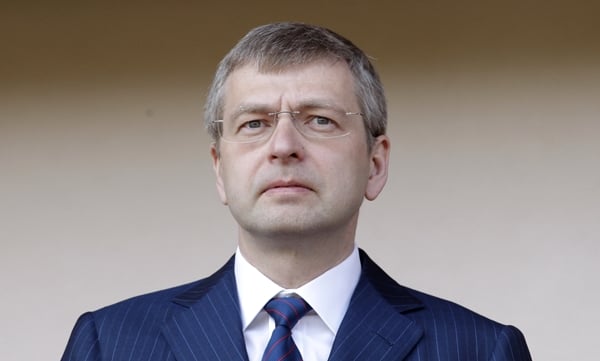Art Guides
Swiss Paper Publishes ‘Embarrassing’ Yves Bouvier Emails, But No Smoking Gun Yet
The damning emails purport to back the Russian billionaire's claims.
The damning emails purport to back the Russian billionaire's claims.
Eileen Kinsella &
Sarah Cascone

Did Yves Bouvier engage in fraud when he sold artwork to Russian billionaire Dmitry Rybolovlev?
Emails excerpted by Geneva’s Le Temps, in a story published April 4, titled “Bouvier: Pieces that embarrass,” are said by the newspaper to back the Russian billionaire’s claims that Bouvier overcharged him. But a number of the messages said to be damning or embarrassing do not show evidence of wrongdoing on Bouvier’s part.
The story, which appeared in French and was translated to English by artnet News, opens by asking whether Bouvier is a “greedy intermediary” or skillful art dealer. The issue is whether Bouvier was selling Rybolovlev artwork as a broker, working to get his client the best possible price, or as a dealer, free to act in his own interest.
Rybolovlev reportedly became suspicious when he discovered that an Amedeo Modigliani he had purchased from Bouvier for $118 million had come from billionaire Steve Cohen, who sold it for a still-princely but considerably lesser $93.5 million.

Yves Bouvier. Photo via Wikimedia Commons.
In late March, courts in Hong Kong and Singapore ordered that Bouvier’s assets be frozen. According to a release sent to artnet News on March 26 by a Bouvier representative in Singapore, a hearing was due to take place in Singapore High Court on April 6-7 to “decide on the discharge application of Mr Bouvier.” Bouvier’s representative, in reply to an email from artnet News, had no updates.
Bouvier sold Rybolovlev some 40 artworks for 2 billion francs. But the “nature of the business bond between the two parties is the central issue.” According to Rybolovlev, Bouvier acted as a broker on the basis of an oral contract with an agreed commission of 2 percent.
According to Rybolovlev’s attorney, Tetiana Bersheda, in reality, Bouvier orchestrated a scheme so that it appeared “he acted in the best interests of my client when he actually set the price of his own paintings.” Bersheda did not immediately respond to a request for comment.
The story quotes Bouvier from an earlier report in Le Temps, published March 6. It says Bouvier “retorted that he was not a broker but an art dealer, free to sell the works at the price he wanted and make capital gains.” Bouvier’s lawyer, David Britton, did not immediately respond to our request for comment, but he is quoted in Le Temps as saying, “Our position is clear: the payment of such fees did not exclude a profit on the sale price.”
The emails show an exchange between Bouvier and Mikhail Sazonov, a representative for Rybolovlev, about buying the Picasso painting Sister of the Artist (1899).
Quoting from an April 1, 2008 message, the report says that Bouvier wrote, “Hi Mike…following the interview with Dimitri in Paris, I’ve started the negotiations … The budget will be about 40 million. I hope to reach a little less, but if I get to 40, it is already an exceptional bargain.”
Citing an April 3 email, the paper quotes Bouvier: “I negotiated hard. The seller is very old and has heart problems. I think I can lower the price…by proposing a fast payment…if the payment period is short, I can try to negotiate 10 percent less or 37.8…I really do not think they can do better.”
Having apparently obtained the agreement of Rybolovlev, Sazonov inquired on April 7, “Dear Yves, so it worked?,” to which Bouvier responded that he got the seller down to €37.5 million with payment due by the end of April, according to Le Temps.
According to the report, Rybolovlev bought the work on April 24, paying €37.5 million, which was directed into the account of Bouvier’s company MEI Invest. That same day, Bouvier sent another email to Sazonov with the subject line “Commissions,” that read “Hello Mike, in response to our conversation today, please transfer the sum of €775,000,” adding the details of his personal account at Dresdner Bank in Geneva. The sum is equal to 2 percent of the sale price.

Dmitry Rybolvelv. Courtesy of AP Photo/Lionel Cironneau.
The story says “large gains appeared on the sales of other paintings,” seemingly indicating it has insight into Bouvier’s records. Le Temps further reports that complainants suspect that Bouvier “helped himself with a generous cut of the sale price” but concedes that, on top of the 2 percent commission, they don’t know how much profit Bouvier actually made on the Picasso.
The report also cites documents and activity related to the sale of a Mark Rothko painting No. 6 (Violet, Green and Red). Bouvier had come to Monaco to meet Rybolovlev and discuss payment of the balance on the sale of the Rothko painting. An April 7 report about Bouvier in the Financial Times (titled “A Market Laid Bare“) stated that Rybolovlev claimed that his trust paid €80 million to Bouvier while Bouvier had invoiced him for €140 million (the report in Le Temps states that Bouvier had paid €80 million to a member of a family named Moueix).
Bouvier was detained that day. He told Le Temps, “I had come to Monaco at the request of Mr. Rybolovlev to discuss this when I fell into an ambush.”
The report in Le Temps suggests that Bouvier quoted a far higher price to Rybolovlev for the painting than he actually paid to the Mouiex family member.